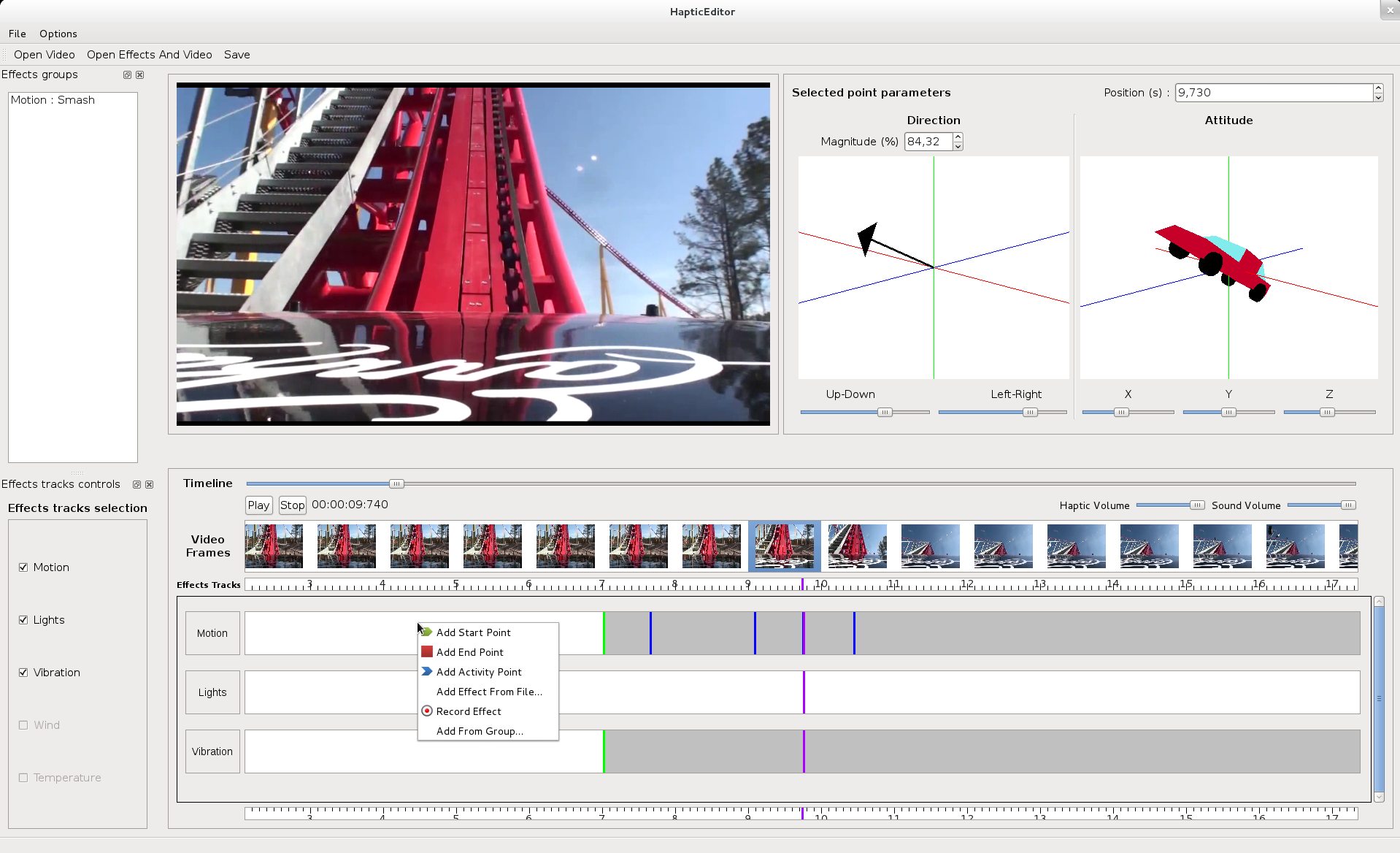H-Studio

Tool Summary
| General Purpose Information | |
|---|---|
| Year of First Releaseⓘ The year a tool was first publicly released or discussed in an academic paper. | 2013 |
| Platformⓘ The OS or software framework needed to run the tool. | Unknown |
| Availabilityⓘ If the tool can be obtained by the public. | Unavailable |
| Licenseⓘ Tye type of license applied to the tool. | Unknown |
| Venueⓘ The venue(s) for publications. | ACM UIST |
| Intended Use Caseⓘ The primary purposes for which the tool was developed. | Haptic Augmentation |
| Hardware Control Information | |
|---|---|
| Haptic Categoryⓘ The general types of haptic output devices controlled by the tool. | Force Feedback, Vibrotactile |
| Hardware Abstractionⓘ How broad the type of hardware support is for a tool.
| Consumer |
| Device Namesⓘ The hardware supported by the tool. This may be incomplete. | Novint Falcon |
| Body Positionⓘ Parts of the body where stimuli are felt, if the tool explicitly shows this. | N/A |
| Interaction and Interface Information | |
|---|---|
| Driving Featureⓘ If haptic content is controlled over time, by other actions, or both. | Time |
| Effect Localizationⓘ How the desired location of stimuli is mapped to the device.
| Location-aware |
| Media Supportⓘ Support for non-haptic media in the workspace, even if just to aid in manual synchronization. | Audio, Visual |
| Iterative Playbackⓘ If haptic effects can be played back from the tool to aid in the design process. | Yes |
| Design Approachesⓘ Broadly, the methods available to create a desired effect.
| DPC, Process, Sequencing |
| Interaction Metaphorsⓘ Common UI metaphors that define how a user interacts with a tool.
| Track, Keyframe, Demonstration |
| Storageⓘ How data is stored for import/export or internally to the software. | Unknown |
| Connectivityⓘ How the tool can be extended to support new data, devices, and software. | IMU Sensor |
Additional Information
H-Studio is a tool meant to add haptic effects, primarily motion effects, to a pre-existing video file. Its primary interface provides a preview of the original audio-visual content, tracks of the different parameters that can be edited in H-Studio, and a visual preview of a selected motion effect. Data to drive a motion effect can be input from a force-feedback device directly or from another source (e.g., an IMU), and motion effects can be played back in the tool to aid in further refinement.
For more information, consult the UIST’13 poster.